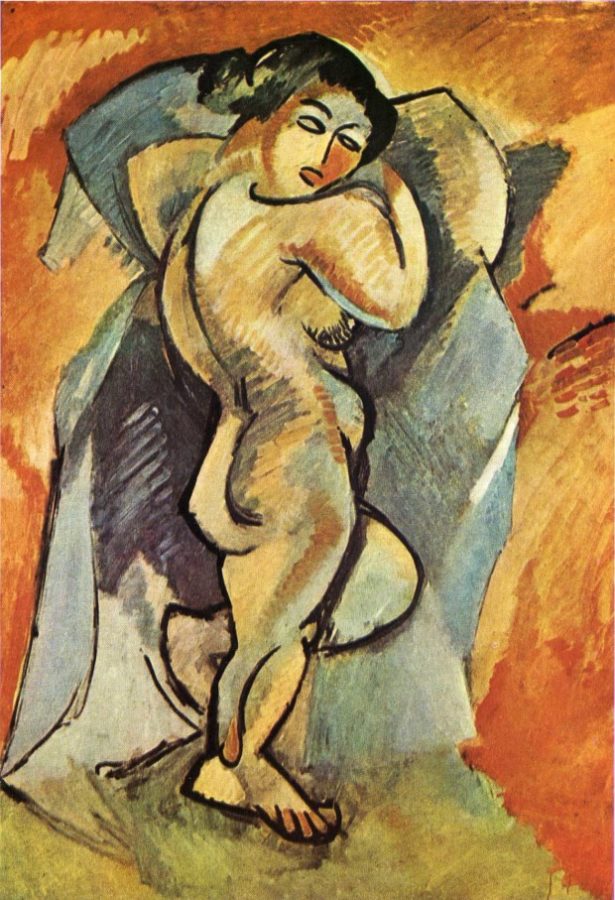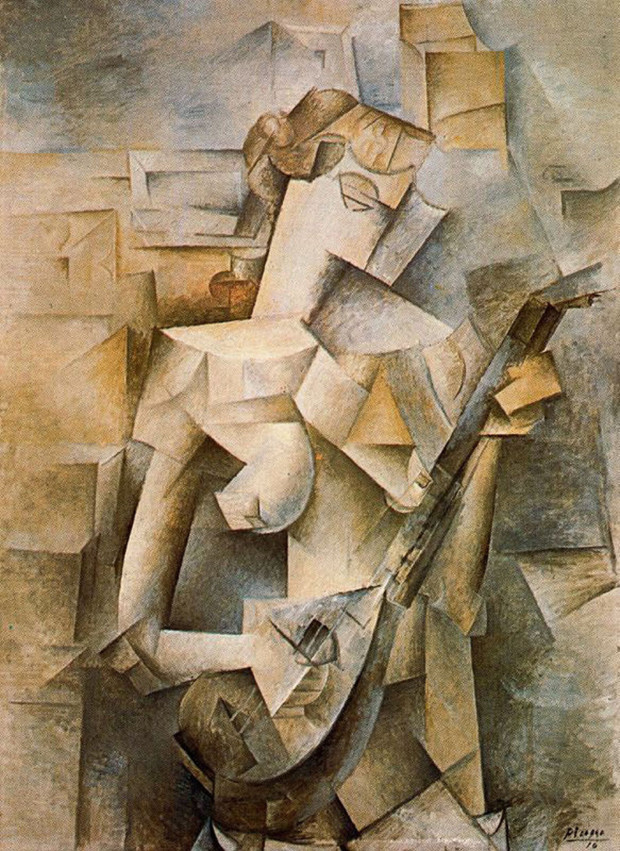Georges Braque – The Second Father of Cubism
Everyone knows Pablo Picasso and considers him the father of Cubism. Everyone also knows that success has many fathers. Today, let’s talk about...
Joanna Kaszubowska 1 January 2024
Art changed a lot during the start of the 20th century. World War I affected this transition and changed the process as many artists tried to express their feelings in a different way during war times. Signs of early Cubism can be found in the works of Paul Cézanne with his simplified view of nature. Cézanne influenced both Picasso and Braque, it is thought that it was thanks to him that Cubism could evolve.
Pablo Picasso’s Les Demoiselles d’Avignon created a new page in art history becoming a cornerstone for the first revolution in 20th century art. The painting produced between 1906–1907 is said to be the first sign of “Cubist thought”. Picasso was definitely impressed and influenced by Paul Cézanne’s Female Bathers in Front of a Tent, from the composure of the subject matter to the perspective used in the painting. He then used this approach in Les Demoiselles d’Avignon — he created a different perspective by using three-dimensional female nudes and two-dimensional space, including ornaments in the room.

Additionally, in 1907 when Guillaume Apollinaire introduced Picasso to Georges Braque, who was already overwhelmed by the Les Demoiselles d’Avignon, Cubism completed its frontrunners. Because of the influence of this early friendship Braque produced a picture titled Large Nude in 1908. While the frontrunners took the lead in Cubist history in the year 1910, the Cubist artists divided into two groups known as Gallery Cubists (Braque and Picasso) as opposed to Salon Cubists (Robert Delaunay, Henri Le Fauconnier, Albert Gleizes, and Jean Metzinger). This separation was triggered by Picasso refusing to exhibit his artworks in the salons and Braque following his decision.

The early era of Cubism (1906/1907-09) was influenced by these two painters who changed the primary subject in their artworks; they no longer imitated nature, but instead created their own reality. It was a continuation of the analytical Cubism formed by Picasso and Braque. Their motifs are not only portrayed from various perspectives simultaneously but are also fragmented into smaller forms, which let them become set pieces of a physical whole.

However, with the start of the First World War, the situation of the artists changed. Many artists in that era were still young, and they were mostly conscripted to military service. Communication between them was disrupted and Cubism as an independent artistic style was lost in the confusion.
DailyArt Magazine needs your support. Every contribution, however big or small, is very valuable for our future. Thanks to it, we will be able to sustain and grow the Magazine. Thank you for your help!